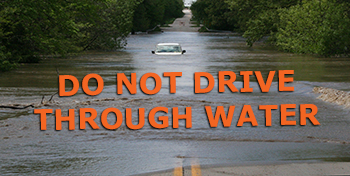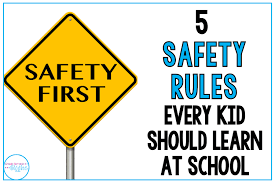The Importance of Disaster Management in Texas
Disasters, both natural and man-made, can strike at any time, posing significant threats to communities across Texas. Effective disaster management is crucial in minimizing the impact of these events and ensuring the safety and well-being of residents.
Natural Disasters in Texas
Texas is prone to a variety of natural disasters, including hurricanes, floods, tornadoes, wildfires, and droughts. These events can cause widespread damage to infrastructure, homes, and livelihoods. Proper disaster management strategies are essential to mitigate risks and protect lives.
Key Components of Disaster Management
Disaster management in Texas encompasses various key components:
- Preparedness: Developing emergency plans, conducting drills, and educating the public on disaster risks.
- Response: Mobilizing resources quickly to provide immediate assistance to affected areas.
- Recovery: Supporting communities in rebuilding efforts and restoring normalcy after a disaster.
- Mitigation: Implementing measures to reduce the impact of future disasters through infrastructure improvements and risk reduction strategies.
The Role of Government and Communities
Government agencies at the local, state, and federal levels play a critical role in disaster management by coordinating response efforts, providing resources, and implementing policies to enhance resilience. Additionally, community involvement is essential in preparing for disasters and supporting one another during recovery.
Challenges and Opportunities
While Texas faces numerous challenges in managing disasters due to its size and diverse geography, there are also opportunities for innovation and collaboration. By leveraging technology, fostering partnerships between public and private sectors, and prioritizing community engagement, Texas can enhance its disaster management capabilities.
Conclusion
In conclusion, effective disaster management is vital for safeguarding the well-being of Texans in the face of various threats. By investing in preparedness efforts, improving response capabilities, and fostering resilience at all levels, Texas can better protect its communities from the impact of disasters.
7 Essential Tips for Effective Disaster Management in Texas
- Stay informed about potential disasters and emergency procedures in Texas.
- Create a family emergency plan that includes evacuation routes and meeting points.
- Prepare an emergency kit with essential supplies such as food, water, medications, and first aid items.
- Secure your home by reinforcing doors and windows to withstand strong winds or earthquakes.
- Stay connected with local authorities and follow their instructions during emergencies.
- Know the location of nearby shelters or safe places in case of evacuation orders.
- Practice drills with your family to ensure everyone knows what to do in different disaster scenarios.
Stay informed about potential disasters and emergency procedures in Texas.
It is crucial to stay informed about potential disasters and emergency procedures in Texas to ensure preparedness and timely response in times of crisis. By staying updated on local weather alerts, disaster warnings, and evacuation protocols, individuals can make informed decisions to protect themselves and their communities. Being aware of the specific risks that Texas faces, such as hurricanes, floods, and wildfires, allows residents to proactively plan for emergencies and follow recommended safety measures. Stay informed, stay prepared, and prioritize safety to mitigate the impact of disasters in Texas.
Create a family emergency plan that includes evacuation routes and meeting points.
Creating a family emergency plan that includes evacuation routes and designated meeting points is a crucial step in disaster management in Texas. By outlining clear procedures for evacuation and establishing predetermined meeting locations, families can ensure that everyone knows what to do in the event of a disaster. This proactive approach not only helps to enhance safety but also promotes communication and coordination during emergencies, increasing the likelihood of a swift and organized response to potential threats.
Prepare an emergency kit with essential supplies such as food, water, medications, and first aid items.
Preparing an emergency kit with essential supplies is a crucial tip for effective disaster management in Texas. By ensuring that your kit includes items such as non-perishable food, water, medications, and first aid supplies, you can be better equipped to handle emergencies and unexpected situations. Having these essentials readily available can make a significant difference in ensuring your safety and well-being during times of crisis. Remember to regularly check and update your emergency kit to maintain its effectiveness in times of need.
Secure your home by reinforcing doors and windows to withstand strong winds or earthquakes.
To enhance your home’s resilience in the face of natural disasters in Texas, it is crucial to secure your property by reinforcing doors and windows to withstand strong winds or earthquakes. By taking proactive measures such as installing impact-resistant windows, reinforcing door frames, and securing hinges and latches, you can significantly reduce the risk of structural damage and protect your family during emergencies. Prioritizing these upgrades as part of your disaster management plan can help fortify your home against potential hazards and ensure a safer living environment in Texas.
Stay connected with local authorities and follow their instructions during emergencies.
During emergencies in Texas, it is crucial to stay connected with local authorities and heed their instructions for your safety and well-being. Local authorities have the latest information on the situation, evacuation orders, shelter locations, and other essential guidance to help you navigate through the crisis effectively. By following their instructions promptly and staying informed, you can ensure that you are taking the necessary steps to protect yourself and your loved ones during times of disaster.
Know the location of nearby shelters or safe places in case of evacuation orders.
In disaster management in Texas, it is crucial to know the location of nearby shelters or safe places in case of evacuation orders. Being aware of designated shelters and safe locations can be a lifesaving measure during emergencies such as hurricanes, floods, or wildfires. By familiarizing oneself with these resources in advance, individuals can quickly access a secure environment and receive necessary assistance when evacuation orders are issued. This proactive approach enhances preparedness and ensures the safety of residents facing potential threats from natural disasters.
Practice drills with your family to ensure everyone knows what to do in different disaster scenarios.
It is crucial to practice drills with your family to ensure that everyone is well-prepared and knows exactly what to do in various disaster scenarios. By conducting regular drills, you can familiarize each family member with the necessary actions to take during emergencies, such as evacuations or seeking shelter. This proactive approach not only enhances safety but also strengthens communication and coordination within the family unit, ultimately contributing to a more effective disaster management plan for Texas residents.




